
Things to do in Paris
The guidebooks all agree that Paris is the most beautiful city in the world. But you don’t need our help to visit the famous Parisian sites where art and history are on display. Let us instead show you a lesser-known, more intimate Paris that local Parisians know and love. Get ready to experience days like no other, as if the capital city let you in on all its secrets.
The Paris of tour guides
Paris is not “only” France’s capital and its administrative and institutional center. It has been a university town since the 12th century and has been called the capital of the arts and leisure since the 19th century. You can see the proof in the parks, palaces, and museums that you visit.
Greater Paris includes the Louvre, the Palace of Versailles, and the Arc de Triomphe. From climbing the Eiffel Tower to visiting Sacré Coeur or the National Assembly or strolling along the Seine with its bouquinistes… The Seine is emblematic of Paris. More than 30 bridges span the river. Of these bridges, the most beautiful is Alexandre III. The most romantic is the Pont des Amoureux, whose real name is Pont des Arts. Despite its name, Pont Neuf is the city’s oldest bridge, dating back to 1609. As for the Pont de la Concorde, it was built with stones from the Bastille. A whole symbol.
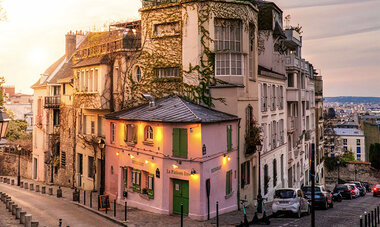
Understanding the city
Paris itself is home to more than 2 million inhabitants in its 20 arrondissements, with 13.5 million people in the greater metropolitan area. Is Paris past its prime? The exact opposite is true for those familiar with the city. It may even resemble a series of closely-knit, closely-spaced villages, each with its own distinct personality. Let’s travel back in time to a few centuries ago. Although Clovis established Paris as a royal capital in the late 5th century, it was not until the 15th century that Paris truly became the seat of royal power. The city grew very quickly. Stone, half-timbered, and muddy buildings spread beyond the city’s walls and into the tiny, chaotic streets, from the banks of the Seine to the seven neighboring hills of Montmartre, Chaillot, Montsouris, and more.
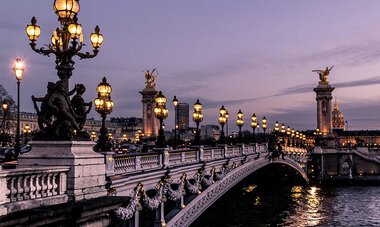
Paris, City of Lights
In the 19th century, Napoleon III sought to transform Paris into a global metropolis by installing modern amenities like gas lighting, water distribution systems, and sewers. He also envisioned wide avenues to facilitate movement through the city, which had grown unhealthy with its narrow streets that became breeding grounds for popular unrest.
He instructed the Prefect of the Seine, Baron Haussmann, to oversee the work. Paris gradually gave way to large stone buildings adorned with carvings. Paris’s iconic Haussmann style gave the City of Light a fresh look that became illuminated in 1860, when 56,000 streetlights were installed.
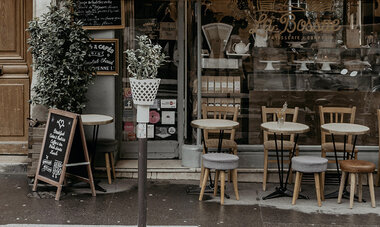
The arrondissements, a collection of small villages
Paris’s modern layout, with its wide boulevards leading to iconic landmarks like Charles de Gaulle–Etoile (home of the Arc de Triomphe), the Opera, and the Concorde, has not inhibited the preservation—or renovation—of several historic neighborhoods. It’s impossible to resist their narrow, cobblestone streets, dotted with wisteria and hollyhock, or to explore beyond their large entryways to forgotten fountains, hidden gardens, quaint shops, specialty grocery stores, and one-of-a-kind stores.
We are pleased to present you with this “Paris of Parisians,” though we are well aware that there are countless alternatives. Around nearly every corner in Paris is a monument that will have you saying, “Oh wow! I’ve heard of this. So, this is really it!”
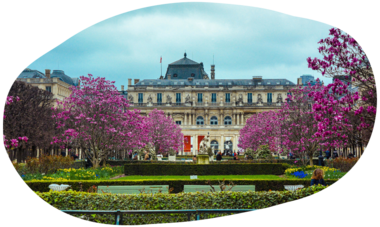
From fountains to gardens
A city of art and history, the mere mention of Paris instantly conjures images of its museums, brasseries, gardens, and theaters. Let’s start our tour in one of Paris’s most treasured neighborhoods, the 6th arrondissement. One of Paris’s loveliest squares, Place Fürstenberg, can be found just beyond the Saint-Germain-des-Prés church. It was here that the painter Eugène Delacroix set up his studio, which is now a museum. In 1830, he created the now-iconic “Liberty Guiding the People,” which you are sure to recognize.
The Luxembourg Garden, created by Marie de Medici in 1612, brings a touch of Florentine style to the heart of Paris. Stroll through the park to admire some of its 106 statues, its rose garden, and its orchard, which are frequented by bees from nearby hives. Don’t miss the opportunity to sail a small sailboat in the basin, a popular pastime that people of all ages have enjoyed for nearly 200 years.

Temple of gastronomy
Hungry for lunch? Are you finding it hard to decide between dining at the Terrasse de Madame on rue de Médicis or the Cherche-Midi, a tiny and very old Italian restaurant on the street by the same name? Both are exquisite. Visit the Vérot delicatessen on rue Notre Dame des Champs and pick up some food to take home or enjoy while sitting on a bench in one of Paris’s many parks. This master of head cheese will prepare for you one of its secret-recipe pork dishes, which you can enjoy with crusty bread from the Poilâne bakery.
As an added bonus, visit the Grande Épicerie du Bon Marché to experience the finest examples of French cuisine and learn what the term “French gastronomy” really means.
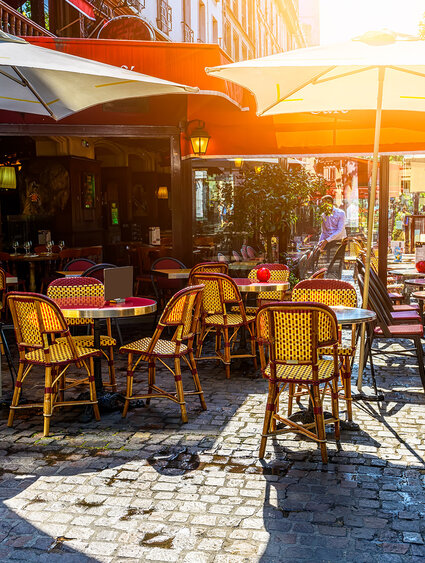
The Paris of curiosities
The Musée d'Orsay, the Eiffel Tower, and the Champ de Mars are all located in the 7th arrondissement, where you can also find Deyrolle, on rue du Bac. Take your family, just like you would to a museum—this shop is a treasure trove filled with taxidermy, rare books, and other oddities. Pick up a book to read in the garden of the Rodin Museum, adjacent to the Hôtel des Invalides and the tomb of Napoleon I. In this garden, you can see the works of the great Parisian sculptor set among the greenery and sculptures. The square des Batignolles
in the 17th arrondissement lends a rural feel to this part of Paris, despite its incorporation into the city proper in 1860. It is one of the 24 parks and gardens that Napoleon III wanted for his modernization of Paris. The district’s little bobo restaurants (located on streets like rue Lemercier, rue Legendre, and rue des Moines) will surprise and impress you with their ambiance and quality.
Drop by 8 rue des Carmes in the 5th arrondissement if you’re a Harry Potter fan or if you’re traveling with kids. Here, you’ll find Mayette, the oldest magic shop in the world. The greatest magicians and illusionists, including Houdini and David Copperfield, have shopped at this store, which first opened in 1808. The shop sells everything, from trick card sets to “Hindu threads” and double-bottom hats. But it’s in the shop's basement where some of the world’s greatest tricks were conceived.
Behind the monuments, the real Paris
Instead of taking you up to the top of Montmartre, we’ll show you around the charming cobblestone streets of the Butte aux Cailles in the 13th arrondissement. With its gently sloping streets, it has retained its village feel. Stroll along Rue Alphand, Passage Barrault, and Passage Sigaud, traditional Parisian cobblestone streets that have become a haven for artists. Sip a drink at the Merle Moqueur, an institution with a Communard flair.
You’ll want to avoid the neighborhoods of the 18th arrondissement, with the exception of Montmartre. Pay tribute to the City of Light’s cinematic past and present by watching a classic film at Studio 28, the city’s oldest theater in operation since 1928.
Then step back in time with a visit to the capital’s oldest residence, located at 51 rue de Montmorency in the 3rd arrondissement. In the 14th century, it was home to the famed alchemist Nicolas Flamel.
Paris is like an outdoor museum, especially near the Louvre in the 1st arrondissement, which is filled with monuments and art. The Palais-Royal Garden offers yet another village within the city. The Comédie-Française, the Théâtre du Palais-Royal, and the Grand Véfour restaurant, whose decor has earned it the designation of a historical monument, all contribute to its allure. You’ll also find contemporary art there, including Buren’s Columns and two Pol Bury fountains. But its charm lies in its one-of-a-kind shops, such as Bacqueville for medals and decorations, the Drapeau de France for lead soldiers and vintage toys, and La Comédie Française. This is quintessential Paris in all its intimacy and originality.